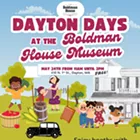Fallout appeared in 1997, joining an apocalyptic setting to a sophisticated role-playing system. Characters were built with statistics that accommodated luck and offered traits such as being good-natured or resistant to drug addiction. Bethesda has preserved this system and linked it to one of their signature open worlds where players are free to chart their own course. The game's massive scale means that it suffers from pacing problems (a blasted wasteland isn't always an exciting place), but the result is the accurate creation of an alternate universe.
Unfortunately, the action in Fallout 3 takes place in a real-time, three-dimensional world while character development remains in two dimensions. Players can constantly attack enemies with a flaming sword known as a Shishkebab, but they won't get any better at using it until they spend points on melee skills. And while the open world of Oblivion let even the lowliest player attempt to pick the hardest locks (with the result that sometimes people got lucky or learned something), players can't even look at Fallout 3's more advanced locks until they raise their lockpick rating.
Bethesda's over-reliance on Fallout's statistics clashes with their own marvelous skills at making real-time versions of abstract concepts -- a sledgehammer swings much more slowly than the Shishkebab, and sorting through the inventory of a room is as easy as looking around. Had Bethesda allowed players' actions to define their characters more fully, Fallout 3 would have been a seamless universe. As it is, it's big, bold and beautiful, but it never fully allows anyone to live there.
THE GOOD: Almost every character in Fallout 3 has a story, and many of those stories have frayed edges that players can weave themselves into. Occasionally there are surreal moments, such as when I was able to ask several citizens about an escaped android that I didn't even know existed. But the game simply gathered the information like a bird amassing nesting materials. When I met the android story's main characters, it become a full-fledged quest, listed with the myriad other quests I had discovered, to be experienced whenever I desired.
THE BAD: Bethesda has devised a combat system called V.A.T.S., in which the game's real-time action can be paused so that players may target their opponent's specific body parts. In theory, this allows enemies to be crippled or blinded. But combat in Fallout 3 is so frantic that the small tactical advantages V.A.T.S. offers are nearly meaningless once real-time action is resumed. Players must either be constantly stopping and starting battles with the hope of subtly defeating opponents, or they can opt for the more effective real-time blasting, hacking, bombing and slashing, which has the advantage of killing enemies in a few desperate seconds.
THE BOTTOM LINE: A post-apocalyptic world that lies like a corpse in the sun -- wriggling and squirming with life for anyone with the determination to cut in.
















